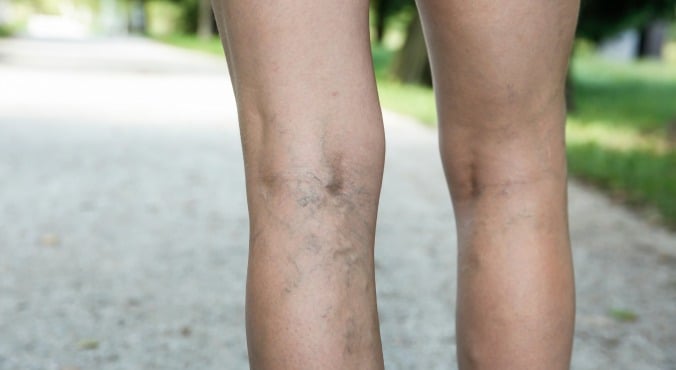
Image: iStock.
They’re the big, protruding blue veins that stick out on your legs. Yep, we’re talking about varicose veins. If yours are a source of pain or discomfort, there are ways you can get some relief. And if you’d darn well like them gone altogether, it’s not as difficult (or expensive) as you might imagine.
What are varicose veins?
Varicose veins are enlarged leg veins caused by leaky valves.
Like all veins in your body, leg veins carry blood towards your heart. (Arteries are the blood vessels that carry blood away from your heart to the rest of your body.) But because your leg veins are fighting gravity, blood-flow up to your heart is controlled one-way valves that open and shut.
When the valves are working properly, they stop the blood from flowing back down– particularly when you stand-up. When someone has leaky valves, the blood isn’t draining from their leg properly and a build-up of pressure damages their veins. This when they become dilated, lumpy and knotty – aka varicose veins.
Who gets varicose veins?
“They’re generally born with a predisposition, but over time and the effects of gravity and being upright and various physical activity, pregnancy – that all causes the build up of venous pressure,” says vein specialist Dr Peter Chu, who sees five to 10 patients a week at Melbourne Vein Centre who are seeking varicose vein treatment.
He says being born with the predisposition doesn’t necessarily mean you are going to develop varicose veins, but you’re more likely to get them as you get older.


